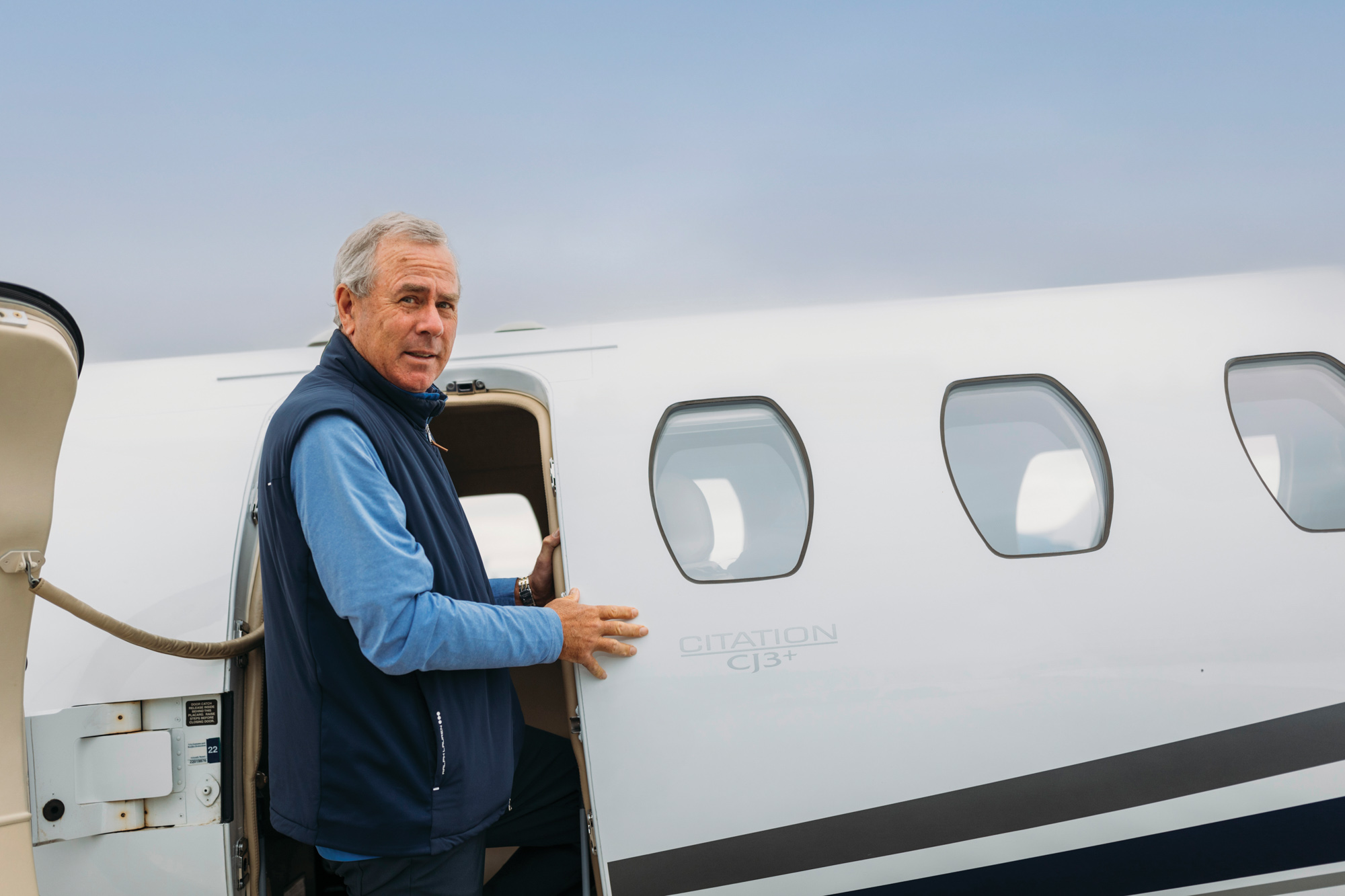On the Wing
As Kiawah’s pilot community knows, the Lowcountry’s allure isn’t always so “low.” Here’s a look from on high at what a few frequent flyers love about Johns Island’s airways.
Story by Stephanie Hunt
Photography by Joel Caldwell
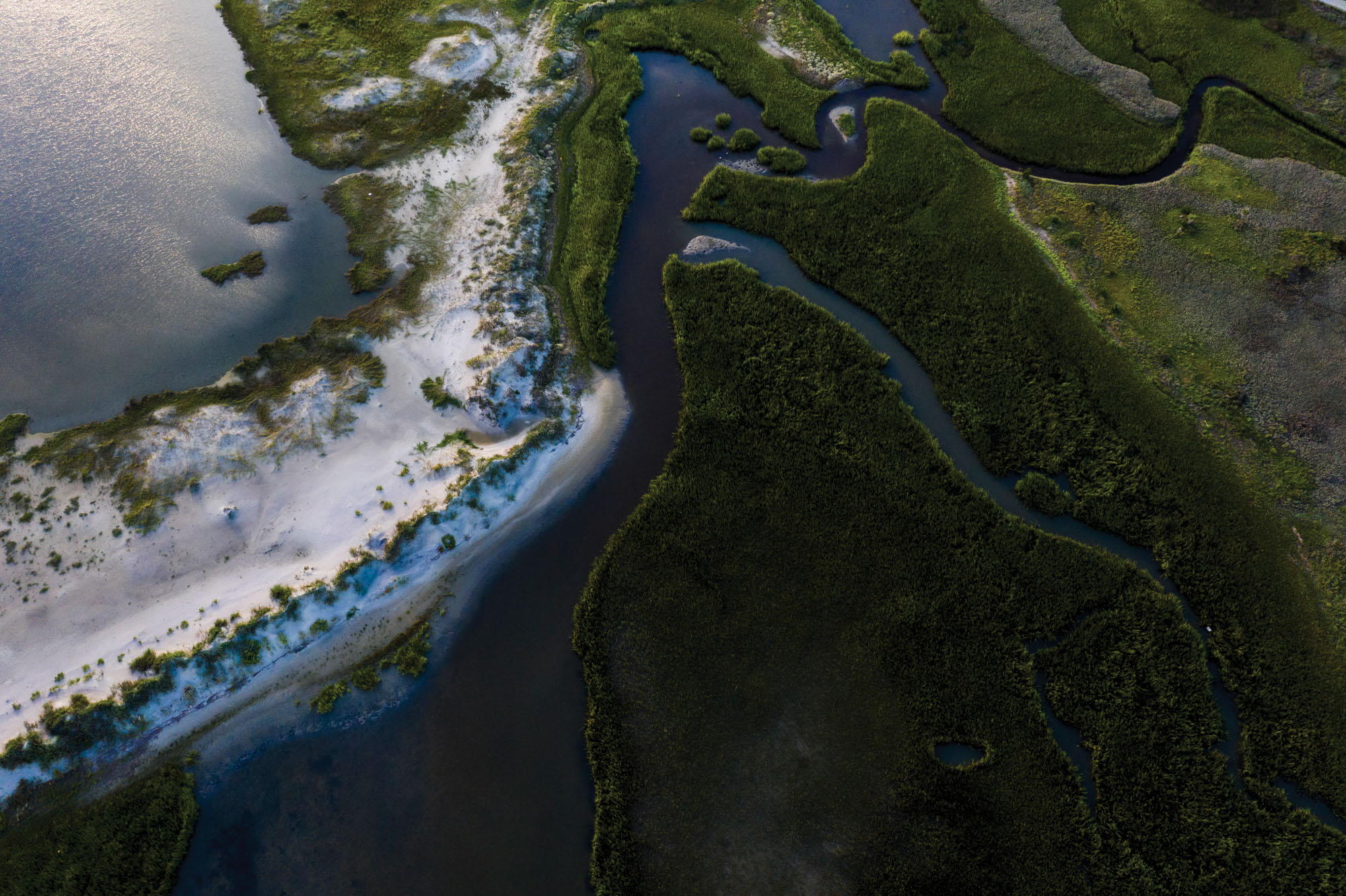
Her pearly gray feathers hardly seem up to the task, yet from her patient perch hunched at the water’s edge, the blue heron uncurls her S neck, stretches forward, and lurches upward. Lift off. Her wings awkwardly batting the air, she barks out a call resembling a rusty door hinge, and then… airborne. Graceful once again—gravity be damned.
We in the Lowcountry are witness to this wonder, this alar amazement, on a daily basis. Indeed Kiawah’s fine-feathered residents are part of the island’s appeal—the egrets and gulls, eagles and owls, the pelicans with their surprisingly efficient prehistoric flight plans. But in addition to these natural aviators, a growing flock of hobby pilots is sharing the Lowcountry’s air space, touching down and taking off at a steady and increasing pace at Charleston Executive Airport on Johns Island.
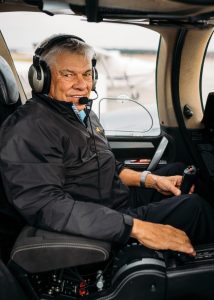
On a chilly late fall weekday, a day of dingy skies and thick, low clouds—i.e. not ideal for flying—fifteen or so small planes, a mix of single- and double-engine propeller planes and gleaming private jets, are on the tarmac, parked between the airport and its two runways. More are lined up near hangars on the periphery of the 1373-acre airport, just seven miles outside of Charleston and a snappy fifteen-minute drive from Kiawah. It’s busy. The high-pitched whir of a Cessna pierces the otherwise hushed island ambiance. A family of four strolls from a plane into the lounge, where Becky at the front desk greets them cheerfully, as she does all the passengers and pilots who travel through. There’s no TSA stress, no baggage claim, no lines to navigate and sludge through, just a friendly hello and bowl of complimentary mints on the counter. If you forget your toothbrush or comb, never fear—the bathroom is stocked with quality just-in-case toiletries.
On average, some 10,000 flights go in and out of Charleston Executive Airport (JZI) each year. That’s up nearly 25 percent from 2021, according to Flightaware. This general aviation hub, owned and managed by the Charleston County Aviation Authority, which also oversees Charleston International Airport and the Mount Pleasant Regional Airport (LRO), is not the sleepy slice of runway amidst horse pastures and farmland that it once was. Indeed, since its 1943 founding as an auxiliary landing field for military planes, JZI has evolved and matured into a classy executive airport, serving the needs of corporate and resort travelers and making access to and from Kiawah and Seabrook a breezy,
pleasant affair.
“Since the pandemic, we’ve definitely seen an uptick in private flights to and from the islands,” says JZI General Manager Paul Aiken. The expansion of services like NetJets, with its fractional ownership model, has made the friendly skies even friendlier, and JZI tarmac more populated, for those who desire the convenience of private air travel without having to earn a pilot’s license or invest in a personal plane. Others however, like JZI regular Jack Skolds, are old school, hands-on aviation buffs.
A former Navy submarine officer before a career in business, Skolds traded depth for height and loves the aeronautic wizardry of his “super cool” Austrian-built twin-engine DA62. “That nozzle on the tail is the de-icing equipment, critical because when you get up around ten thousand feet, the temperature drops to the teens. And here’s the baggage compartment,” he explains, lifting a flap on the polished nose to reveal a spotless, compact area, clearly for the tidy and organized.
Skolds, seventy-two, learned to fly early in his retirement, initially in Charlotte, but let his certification lag. After moving to Kiawah, “I caught the bug again and got recertified,” and now has some nine hundred hours under his wing. “I fly about once a week, usually solo. Sometimes just down to St. Simons Island for barbecue,” he says. “I’m not one who gets a thrill from flying. For me it’s about the mental and physical challenge, the focus,” he says, pointing out the intricacies of his plane’s high-tech control panel, a Star Wars-esque array of lights, buttons, knobs, and blinking display screens. “Flying keeps me sharp, keeps me learning.” A beeline to his favorite hush puppies or easy foray to a Florida board meeting is simply the bonus.
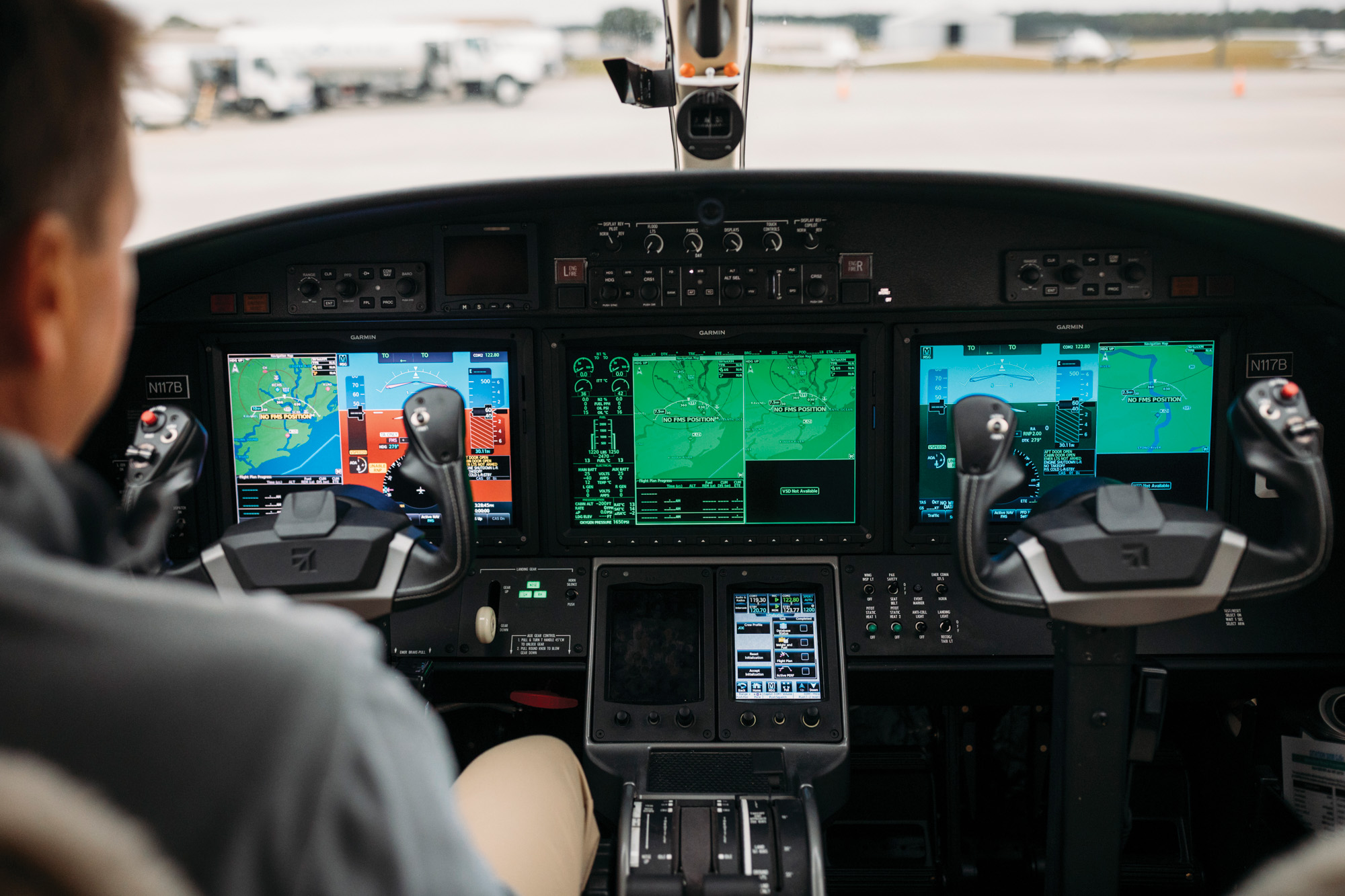
For Kentucky resident and Kiawah homeowner Joseph Murphy, flying for point-to-point transportation has morphed into a passion for planes, including his sleek ten-passenger turbo engine Cessna CJ3+, which he uses for business and for bringing his wife and three kids on the quick seventy-minute flight to and from Kiawah. “I can have breakfast in Kentucky, then be here on the golf course in no time,” says Murphy. “It’s so convenient. This little airport is excellent—the staff all know me by name.” Murphy earned his pilot’s license “for giggles” in the mid-1990s, and he has bought and sold some fourteen or fifteen planes since 2000, from a 1946 aluminum Globe Swift single-engine, which he mainly only taxied back and forth on the runway when his oldest son was three years old (“I could fly it, just wasn’t so sure I could land it”), on up the ranks. He graduated to the CJ3+ in 2018—“the only new plane I’ve ever bought,” thanks in part to country music star Dierks Bentley’s arm-twisting. “It’s the best plane out there,” the singer affirmed backstage at a concert.
In addition to the leather-trimmed turbo jet, Murphy’s latest fleet additions include two L-39s, a Czech-designed low wing turbofan plane revered as the finest jet trainer ever made. Think Top Gun. “I wanted something that looked like a fighter jet. It’s a confidence builder,” says Murphy, who is learning to fly formation with a retired Air Force fighter pilot, his frequent copilot on the CJ3. The war bird can pull 8 G’s. “Well, I can’t, but it can,” laughs Murphy, who takes the L-39s to air shows. “I was going to sell one, but I had so much fun at the Dayton Air Show I decided to keep both.”
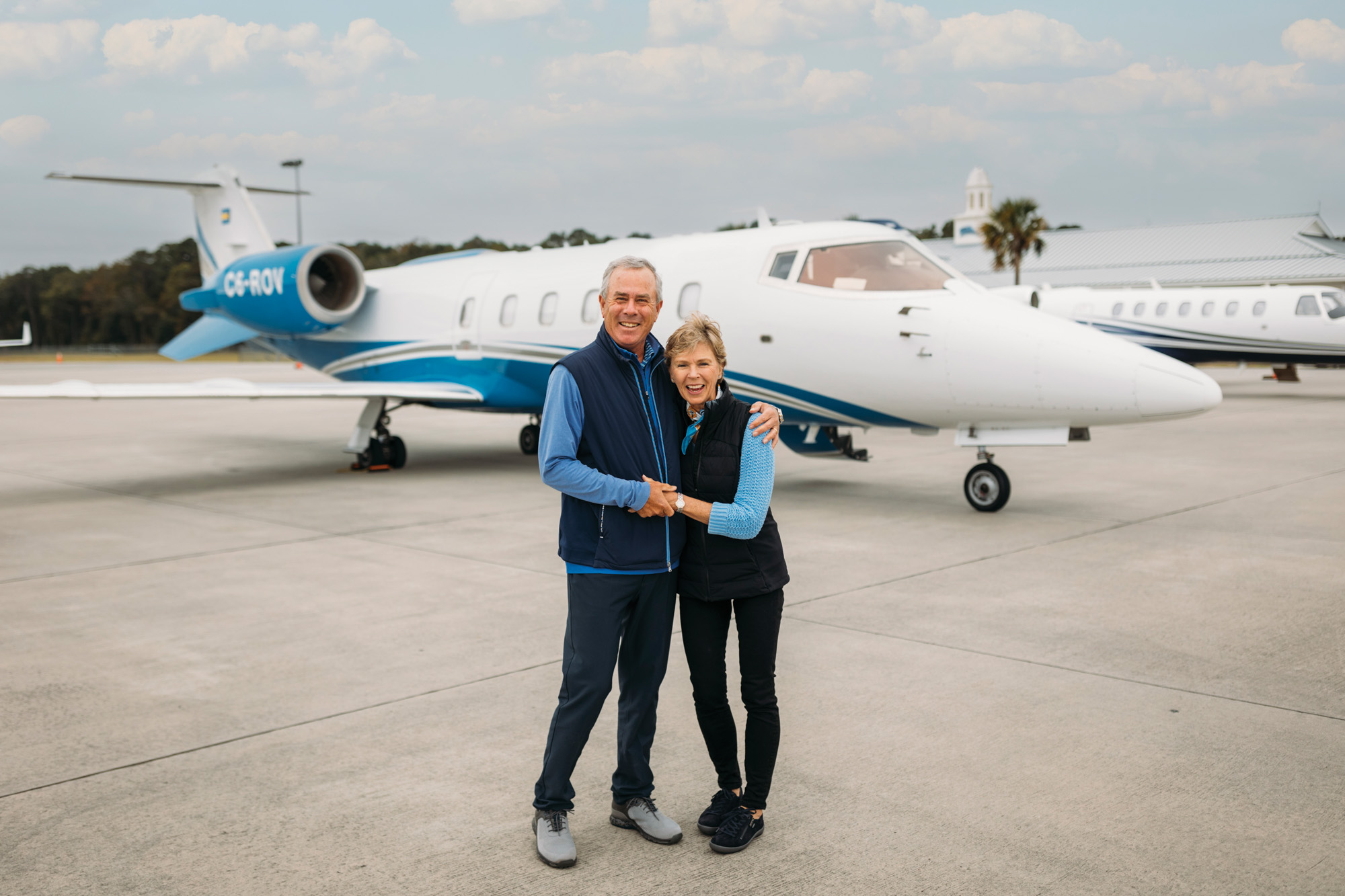
Like Murphy, recent Kiawah transplants Frank Blatcher and his wife, Pam, have enjoyed ready airway access through having part-ownership in small planes since 1987. Initially Frank, who was taking flying lessons when he and Pam met in law school, was the sole family pilot, jetting (or propelling) Pam and their three young kids from their home in Philadelphia to vacations on the Outer Banks and elsewhere. “I’d always paid attention and was dimly aware of what Frank was doing, but I realized the planes were getting more sophisticated and if something happened and the kids were in the back, I wanted to know how to land,” says Pam. Assuring her that Air Traffic Control could talk her down should an emergency arise, Frank asked Pam to show him how she’d contact ATC, so she pushed a button. “You just turned off autopilot, your best friend,” he told her, then tucked a certificate for flying lessons in her Christmas stocking that year.
“I enjoy flying, but I’ve always been more mission oriented,” says Frank. “If I was flying, I was going somewhere—taking Philadelphia buddies here to golf, or flying to New York for work, or taking the family on vacation. Pam, on the other hand, flies simply for the joy of it. She’ll just go out and chase sailboats.” Since moving full time to Kiawah after semi-retirement from their law careers, the two don’t currently own, lease, or share a plane, but they expect that will soon change, especially with the ease of having JZI at their backdoor. “I do miss flying, but I’m so happy living here that I haven’t worried about where I want to go,” says the destination-focused Frank. But Pam is itching to take wing again for her own personal, even spiritual reasons.
“I love the freedom of it,” she says. “Flying is just incredible, and the things you see are so beautiful. For me it’s all about nature and God, the creation aspect of it, the science of flight, and the freedom to go anywhere. Just file your flight plan, and you can go anywhere.” When they’re on Kiawah playing golf with friends and hear the roar of a plane overhead, Pam says, “Our friends laugh because the shot stops and we step aside and look up until the plane flies by. Flying is definitely in both of our hearts.”




